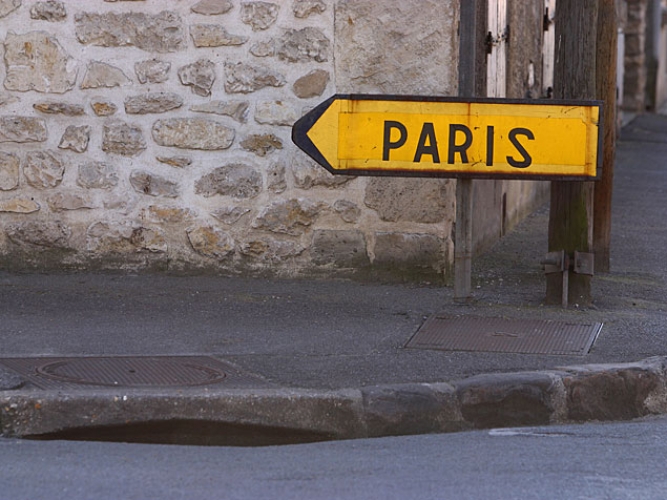




Vacation in Paris Blog

After The Yellow Vests
Places To Visit - Posted on Dec 20,2018 by Hampton*Jan
No, this is not an ad bought and paid for by the Paris Chamber of Commerce or Board of Tourism. It’s a heartfelt article written by a couple who have lived here for more than 40 years and seen more demonstrations than they can count. To some, the latest “yellow vest” protests in Paris may have looked like the end of the world, a frightening place to avoid at all costs. Let me assure you nothing could be further from the truth.
The Christmas lights on the Champs-Elysees are sparkling; monuments and museums are open. Outdoor food markets are packed with delicious and beautiful seasonal specialties. And everywhere there are tourists thronging the streets and lining up at all the iconic spots.
As someone said, “Paris is a city that recovers quickly.” After all, it’s a place that has survived a Revolution, two World Wars, floods at the beginning of the 20th century and starvation brought on by the siege during the Franco-Prussian War in 1870. Compared to those cataclysms, these “yellow vest” or “gilet jaunes” protests are just speed bumps. Somehow Paris always emerges with its grace and beauty intact, and it manages to do so almost-overnight.
That’s exactly what we’re seeing now. Our neighborhood, the area around Avenue Kleber, was probably the worst hit during the second week, or as the French call it, “Acte II,” of the demonstrations. We walked down to the street and saw cars burning, ATMs hacked to pieces, motorbikes broken into bits and doors and windows shattered. It did look like the Apocalypse.
On the following Saturday, the day of “Acte III,” everyone went into preventive mode. Businesses were closed, windows and doors boarded up. The street was empty of cars and pedestrians; it looked as though it had been evacuated for a hurricane.
But that was Saturday. Sunday, the butterfly magically emerged from the chrysalis. Overnight sheets of plywood and protective grills were gone, lugged to backrooms and storage areas by workers seemingly conjured up. Businesses and cafes were full of people; traffic was back on the street.
Oh, the ATM's were still covered over (they had not given up their cash even when smashed to smithereens!), but the local supermarket stepped up its program of “cash back” service, and the ATM's inside stores were fully operational.
Yes, there are scars and worries, but a lot of the air appears to have gone out of the movement and the eagerness to demonstrate, thanks in part to the government’s sudden willingness to listen to the concerns of a huge chunk of its citizenry.
Those are truly legitimate concerns about declining purchasing power and increased taxes. All are felt most strongly in rural areas, away from the urban centers where jobs are fewer, salaries are smaller, distance to services are greater and public transportation is essentially non-existent. People living in the countryside believe they have been ignored, their problems never listened to by the seemingly distant and aloof government. Which is why they decided the only way to get the attention of President Emmanuel Macron and his administration was to carry their protest into the cities.
Most French are sympathetic to the “yellow vests” and their problems. They remain so, in spite of the weeks of protests. Even long-time city-dwelling French feel a strong tie to their countryside and a pride in it. They honor the idea of their country as an agricultural one. After all, food is one of France’s genuine treasures.
What they do not like and generally abhor is the coterie of “casseurs” or “breakers,” the vandals who have attached themselves to the movement. Their main goal is destruction of property; it’s not to attack people. Ordinary citizens are generally safe, something we noticed as we stood there on Avenue Kleber watching the casseurs run amok.
So, are the “yellow vests” gone? Are the demonstrations over? No, probably not. But daily life has overtaken them. It’s expensive to buy a train ticket to travel to a city like Paris to protest; it costs money just to drive there. The holidays are upon us and protesters want to enjoy them too.
Plus, the government is finally listening to them. New fuel taxes have been postponed and the minimum wage has been raised. Maybe President Macron has begun to quit worrying about climate change and the end of the world and joined them in worrying about how to make ends meet at the end of the month. Of course, even though the guillotine is gone, he now needs to worry about his own survival.
So, yes, it’s safe to go back into the water, or, in this case, to go to Paris. In fact, after the loss of business and tourist dollars during the height of the protests, you will be welcomed more warmly than ever. As Audrey Hepburn famously said, “Paris is always a good idea.”
She is still right.
Our latest guest bloggers - Don and Petie Kladstrup
Don and Petie Kladstrup are authors of two best-selling books, the first being
Don and Petie are former journalists. Don was a award-winning foreign correspondent for CBS and ABC Television News. Petie worked for several mid-western newspapers before serving as an assistant to the American ambassador to UNESCO in Paris. They are the parents of two daughters and have lived in Paris since 1978, splitting their time between the city and their country home in the south of France.

© 2017 Vacation In Paris
Site by: J.E.G. Design, Inc.













